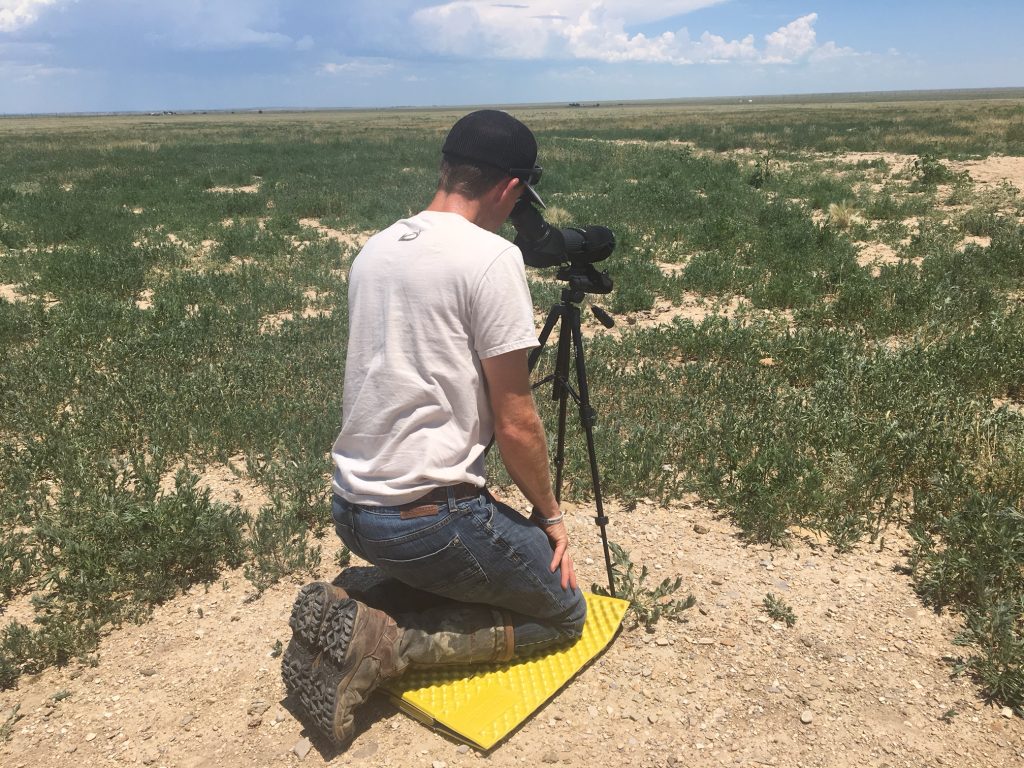Whether you’re scouting or hunting, knowing how to glass properly is key to locating more game, especially the critters that don’t like to show themselves and often carry worthy headgear.
Tip #1: The More Comfortable You Are, The Better
Yes, there are times to scan. To casually lift a pair of 12X binos to your eyes. To quickly run them over terrain. Most often, however, you’ll want your butt on a soft pad (I prefer the uber-light Therm-a-Rest Original Z Lite) and a pair of 12X to 15X binos mounted on sturdy tripod. The soft pad makes spending time behind the glass much more comfortable, and the tripod reduces any amount of shake or wobble. Shakes and wobbles lead to missed game and can quickly cause a splitting headache.
Tip #2: Binos, Eyes, Glass
Upon sitting down and getting comfortable (I prefer to be on my knees or sitting cross-legged), scan the area you plan to look over with your binos. Work right to left, then left to right. After a general scan, attach your binos to your tripod (having a binocular-to-tripod attachment system is a must). Next, look over the area you plan to glass with your plain eyes and develop a grid pattern in your mind. I like to pick three or four landmarks in the grid. These landmarks keep me from drifting out of the grid and moving on to new terrain too quickly. Now, get your eyes behind your glass and move slowly and methodically over the area. Stay focused! You’re looking for the twitch of an ear, the shimmer of horn tip and the slightest hint of colored hair. If your first gird search turns up nothing, pull your eyes from the scope and visually plan out the next grid.

Bauserman prefers to glass on his knees or sitting cross-legged.
Related: How to Find the Right Pronghorn Water Source
Tip #3: Focus on What Catches Your Eye
If something piques your interest — even if your mind tells you it’s likely nothing — attach the spotting the scope and zoom in to confirm it. Countless times my brain has told me I was looking at a rock, twig, tipped over log … the list goes on. And countless times those “nothings” turned out to be a bedded animal.
Tip #4: Stay Still
When you do turn up a bedded animal, don’t move the scope! As a rookie, I did this countless times and would often spend precious minutes relocating the animal. The second you spot an animal, secure your optics on the tripod and lift your eyes from the scope or binos. This will allow you to better triangulate the animal’s position and give you a few points of reference should you loose the critter. Locking the binos or scope down keeps them glued on the animal while you take a gaze at the landscape.
Tip #5: Avoid Glare
If at all possible, get the sun at your back. This will keep the glare off your optics and illuminate the area you’re planning to glass.
Related: Build Your Trail Camera Pack
My Current Glassing System
At the moment, I’m running a pair of SIG ZULU7 8x42 MM HDX binos. These are my around-the-neck binos, and they work great when a quick scan is needed.
My on-the-pod binos are a pair of Nikon Monarch 5 16x56 binos. When it comes to a spotting scope, I’m currently bouncing between a pair of models. Both have proved to be seaworthy optics. Maven’s S-1A (the A is for angled) provides quality 25-50X magnification and boasts excellent eye relief. Nikon’s Monarch 60ED-A (again, A is for angled) FieldScope provides edge-to-edge clarity and the ED (Extra-Low Dispersion) glass minimized color fringing.
My current tripod is Vortex’s Vortex Pro GT. It’s sturdy, fairly light and makes optic attachment easy. When mounting my binos, I use Vortex’s Binocular Tripod Adapter. I’m also using a standard Nikon model as well. It’s economical and great for close-to-home scouting.
What glassing methods have you developed over the years? Let us know in the comment section below!
Featured photo: Nick Trehearne Photography






